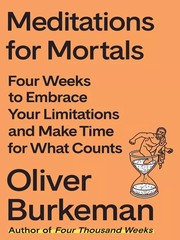Below are my notes and highlights from this session at Write The Docs Europe 2016 in Prague. This is part of a series I wrote during the conference. This is not meant to be transcriptions and may have missed points made during they talk. They solely reflect my interpretations of the talk.
Watch that tone!
Creating an information experience in the Atlassian voice
by Sarah Karp
“Creating meaningful interactions with users requires a strategic voice with a human tone.”
Kate Kiefer Lee, MailChimp
What is Voice and Tone?
Voice is a branding tool. Voice should not change. Tone is where the voice becomes more human and adapts to the situation. This can come in the form of informal language, bits of humor, etc.
Voice = Personality
Tone = Mood
Challenges
Sometimes you miss the mark because no one has had a particular experience. For example, her employer, Atlassian, once launched a 404 page with a graphical stylized “missing child milk container.” This caused concern for a customer who had a personal experience with a missing child. This was something no one in the company had experienced and therefore they didn’t realize in advance that this bit of humor had missed the mark.
Tone needs to be adapted for different scenarios. For example, a 404 page is frustrating while a bill is business like. Tone needs to reflect this.
Personal Preference is a big challenge with tone because it doesn’t resonate with everyone from every culture the same way. This is doubly critical to consider with translations. (bexelbie: Sometimes tone can be hurt simply because your translators don’t know how to write in their native language for the target audience and fall back on almost literal translations.)
Without guidelines you can have problems and create a disjointed brand and voice experience.

Solutions
Her company started by working with MailChimp, the leaders in the space, to develop a way to do use voice and tone.
Once they had a plan, the benefits had to be clear and shared with the whole company. Then benefits they identified were:
-
Brand Identity
This is critical, especially when there is no direct sales force.
-
Human Connection
Poor copy may not be a reason someone leaves a product, but good copy may help them stay.
-
Customer Engagement
Voice and tone can drive usage. A/B testing should be able to demonstrate this.
Defining Voice & Tone
Look at your brand guidelines for key words and emotions. Look across all brand and content teams for how they currently handle voice and tone.
Atlassian landed at a voice & tone that is:
- Bold, but not cocky
- Optimistically provides solutions, but isn’t delusional
- Practical and direct, with a wink, but isn’t immature
Remember, voice doesn’t change, but tone does.
To get this across to all employees, teach them by example. For example, Atlassian has a repository of winks that failed and winks that worked. These examples are supported by the customer feedback to explain why the result happened.
Atlassian also produced a set of voicify cards. These cards explain the scenario, the job of the writer, what the user is feeling, and includes examples. There is also a set of scales to help moderate the levels of bold, optimism, and practical “winkness”.
Creating a Process
Inject writers into the creation process for the product. Then have them follow a process similar to:
- Set the scene: Know exactly what the customer will go through and feel in that moment.
- Grab the voicfy card for the specific kind of situation and follow the pattern.
- Review: Atlassian maintain an internal chat to do this peers first. After that it is shared with the product team.
- Share the document with the world.
Content Audits
The goal of content audits is to make sure that all of the copy meets the right voice and tone. This is typically everything from docs to error messages to blogs and marketing pieces. This is not a one step process and it is ongoing.
A part of content audits at Atlassian has been to run voice & tone via workshops. These workshops help others learn by doing and by example. One workshop exercise is to challenge participants to modify something to fix the voice and tone.
Sarah provided an example dialog box that informed the user that “Rewrite Can’t rename pictures because a file or folder with that name already exists: specify a different name.” and then asked us to try and rewrite it.
In her workshop, people have came up with:
- Getting rid of the dialog entirely by blocking the save if the name is bad.
- Letting the user choose a new name in the dialog itself.
- Reformatting the dialog box’s graphics to eliminate some of the error and close style X’s.
These great ideas hadn’t even touched on the text which needed plenty of help.
Find your voice
Understand your tone
Conquer the world


